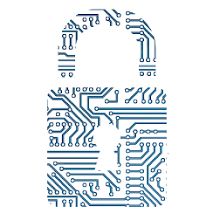Deep
fakes have been around for a couple of years at this point. This innovation is
as of now being utilized noxiously, such as spreading bogus data via online
media. It is likewise utilized for more comedic purposes, such as placing
Nicholas Cage in not-horrible films. To some of you, this is may be old
information, since Deep fakes originally
stood out enough to be noticed back in 2017. We even discussed it in our new
post where we called "Deep fakes a Cybersecurity Threat for 2020". All in all, why bring it up
once more?
The Target Has Changed
Already,
to make an acceptable deep fake,
long stretches of source video showing the objective's face was required. Thus,
at first this restricted its utilization to famous people, legislators, and
other individuals of note. Late progressions in Machine Learning have permitted
fakes to be made utilizing a solitary image of the objective and only 5 seconds
of their voice. These days, it is regular for individuals to post pictures and
recordings of themselves via online media. This could be every one of the an
aggressor needs to make a reasonable profound phony. Sound frightening? It is.
The objective has changed. Any individual who has a presence via web-based
media could be helpless against pantomime over telephone and conceivably even
video calls. Release us over how these assaults work, and how you can guard
yourself and your organization against them.
On the Phone
Voice deep fakes have
been around for a long time. A couple of years prior, Adobe flaunted a program
called VoCo. It needed around 20 minutes of an individual's discourse and had
the option to impersonate them shockingly well. Despite the fact that this item
was planned for sound altering experts, it is thought to be ceased due to moral
and security concerns. All the more as of late, different organizations have
regrouped. There are currently financially accessible items, like Lyrebird,
Descript and others, that duplicate or even enhance this innovation. An open
source project called "Continuous Voice Cloning" can produce credible
voice cuts utilizing just seconds long examples of an individual's
discourse.
Tragically,
this sort of assault is not, at this point theoretical: In 2019: "A Voice
Deepfake Was Used To Scam A CEO Out Of $243,000". The CEO thought he was
addressing the CEO of the company's German parent organization. What persuaded
him? He perceived his supervisor's slight German inflection and the tune of his
voice on the telephone. In the present circumstance, having the right voice
gave this aggressor enough believability to separate $243,000 from his
objective. We have talked in the past about how amazing these vishing assaults
can be, yet with an apparatus like this in an aggressor's meditations
stockpile, vishing will be undeniably more risky.
On
a Video Call
Envision you are telecommuting because of
COVID-19. You get an email connect from an
associate you have conversed with a couple of times previously. He is
mentioning that you go along with him in a video gathering. The call continues
true to form: you trade good tidings and examine some touchy organization
information. On the off chance that the individual looks and seems like they
regularly do, what reason would you need to question their personality?
Lamentably, in this model the colleague is a con artist purpose on taking
organization information. It might appear to be implausible, however
progressions in deep fake tech make it clear that this sort of assault will
before long be conceivable.
What
required numerous long periods of source video and figure time previously, should
now be possible with a solitary picture in a negligible part of the time.
While
it may look like sci-fi, this is genuine. The program just approaches one
picture of every entertainer, except as should be obvious, it's ready to
duplicate squinting, eye developments, mouth developments, and even head slants
with insignificant mutilation. Instruments like this one are emphasizing
rapidly, and are presently useable progressively. This makes the way for
vishing-like assaults over video conferencing instruments like Zoom.
How Can We Defend Against This?
Profound
fakes are getting increasingly hard to identify with our eyes and ears.
Man-made intelligence based discovery techniques are being fostered that can
assist us with recognizing fakes, however it's essential to remember that these
will probably never be secure. It resembles a mental contest, as location
improves, so will the fakes. You should be watchful for when an assault escapes
everyone's notice.
It's
essential to have exacting confirmation methods upheld. Make certain to
rehearse them in any event, when you perceive somebody's voice or face. Which
check strategy you pick relies upon the security necessities of your
organization. Whenever workers have been taught, you should be certain that
confirmation methodology are being followed. You can test your representatives
by having them get live calls from prepared experts who can imitate the
strategies of genuine assailants.
You can secure yourself by and by restricting your public presence via online media. By empowering protection limitations, you can keep tricksters from effectively taking your voice and similarity. It's consistently essential to rehearse great record security. One of the primary ways you can do this is to utilize multifaceted confirmation on each record, if conceivable.






0 Comments